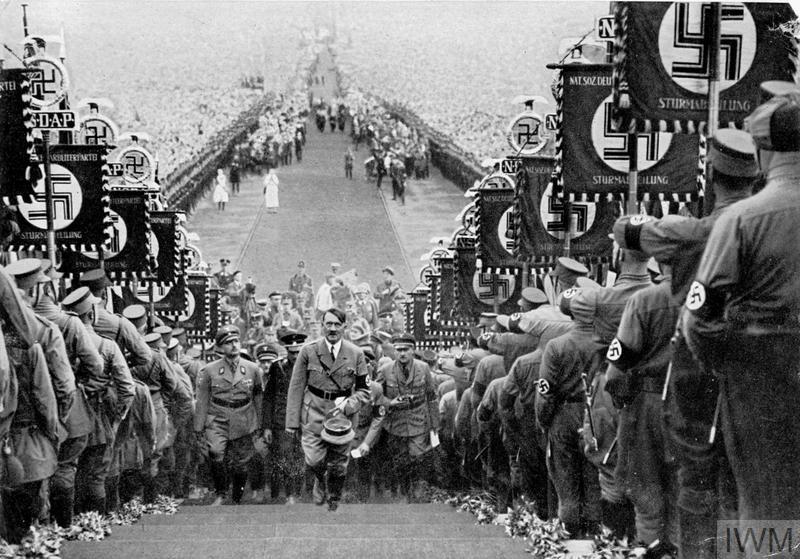After Germany invaded the Soviet Union on 22 June 1941, the Soviet leader, Joseph Stalin, demanded help and Britain and its allies provided supplies. The most direct route was by sea, around northern Norway to the Soviet ports of Murmansk and Archangel.
The first convoy sailed in September 1941. The convoys were coded depending on their route - initially PQ for outbound, QP for homebound. From 1943, the codes changed to JW and RA - outbound and homebound respectively.
The route passed through a narrow funnel between the Arctic ice pack and German bases in Norway, and was very dangerous, especially in winter when the ice came further south. Many of the convoys were attacked by German submarines, aircraft and warships. Convoy PQ17 was almost destroyed.
THE WAR AT SEA
Convoy PQ17 assembles at Hvalfjord, Iceland, June 1942. PQ17 was ordered to scatter as the British Admiralty feared an attack by the German battleship Tirpitz. The merchant ships were attacked by U-boats and aircraft, and only 11 out of 34 reached the Soviet Union. In all, 153 merchant seamen died. In the background is the Soviet tanker Azerbaijan, whose mainly female crew saved their ship after it was bombed and set on fire.
Conditions were among the worst faced by any Allied sailors. As well as the Germans, they faced extreme cold, gales and pack ice. The loss rate for ships was higher than any other Allied convoy route.
Over four million tons of supplies were delivered to the Russians. As well as tanks and aircraft, these included less sensational but still vital items like trucks, tractors, telephone wire, railway engines and boots.
Although the supplies were valuable, the most important contribution made by the Arctic convoys was political. They proved that the Allies were committed to helping the Soviet Union, whilst deflecting Stalin’s demands for a 'Second Front' (Allied invasion of Western Europe) until they were ready. The convoys also tied up a large part of Germany’s dwindling naval and air forces.



